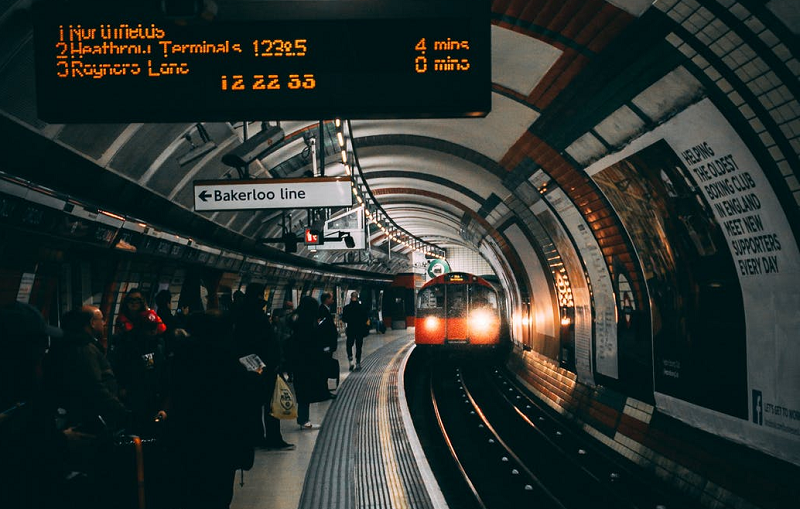Commuters journeying into the UK capital spend nearly two and a half hours per day travelling door-to-door, an average of £10,020 worth of unpaid time, according to new research looking into the costs and savings of remote working.
The study conducted by location agnostic technology PR agency Tyto revealed that working from home saves London commuters an average of 23.5 days per year in travel time or the equivalent of £10,020 in unpaid time.
This also saves them an average of £5,114 in travel costs (i.e. 18% of the average annual London net post-tax salary).
Key findings include:
• On average, commuters into London spend 23.5 days a year commuting – which is an average of £10,020 worth of unpaid time
• London commuters are spending almost a fifth (18%) of their salaries travelling on average, and would save £5,114 a year by working from home full time
• Parents that commute must part with an additional £2,873 per year to cover wraparound childcare, which equates to 10% of the average London net salary post-tax
The study analyses the time and financial costs London-bound commuters must bear each year due to their travel into and out of the city. Anchored around the cost of a commute into London King’s Cross (one of the capital’s busiest central terminals), the comprehensive analysis breaks down the time and financial burden of travelling from key commuter belt locations in southern England into central London on a daily and annualised basis.
Commenting on the findings, Brendon Craigie, Founder and Managing Partner at Tyto said: “The costs of the commute are both tangible and invisible. The economic costs include not only earnings lost to the cost of the commute, but also the mental cost of unpaid hours spent travelling to the office. Work from home measures enacted as a result of the coronavirus pandemic have revealed that perhaps these costs can be avoided by implementing remote working.”
Financially, commuters’ salaries – which are typically higher in London than the rest of the UK – take a significant hit due to train fares. Per year, the average cost of a commute into London comes to £5,114 (i.e. 18% of the average annual London net salary post-tax).
For parents requiring childcare, the picture is even bleaker, with the average cost of wraparound childcare required to cover commute times equating to £12.17 per day, or £2,873 per year (i.e. 10% of the average London net salary post-tax).
Of the key commuter towns, Oxford, Worthing and Tunbridge Wells were the top three most expensive, costing commuters a staggering £5,969 per year to travel into London from these locations. That’s 14% higher than the average commuting cost from other London commuter belt locations.
Craigie continues: “Though this study considers the time cost and financial expenditure of commuting, in truth, the impact of a draining daily commute takes more than just a financial toll. It means you miss out on experiences with your family and friends and can also be of real detriment to your physical and mental wellbeing.
“Fortunately, I think we’re now looking at the beginning of the end of the commute for many as employers begin to realise that there is little to be gained by commuting into a central London office location every day simply to perform a job that can likely be performed just as effectively remotely.”
Methodology
The focus of this study is the cost of commuting to London for work. The study used 17 of the most popular commuter towns to calculate these costs. These are: Chatham, Luton, Basildon, Harlow, Southend, Maidstone, Slough, Worthing, Chelmsford, Reading, Fleet, Tunbridge Wells, Hemel Hempstead, Oxford, Guildford, Beaconsfield and St Albans.
To be able to provide a consistent benchmark they used King’s Cross as the nominal London office location for the purpose of calculating the commute.
In addition to the primary train commute they have factored in London Underground transfers, and have also made an allowance of 15 mins to and from people’s homes to their home commuter station.
London journey times are taken from CityMapper app (with the exception of Worthing, with an estimation being taken from Google Maps) based on an arrival to work time of 9am on a Monday and a departure from work at 6pm on Monday (assumption that this is an “average” London working day).
The study used the 2020 fares as listed by Trainline to calculate the train season tickets and has been combined this with London Transport’s 2020 Zone 1-2 monthly Oyster card charges.
When it refers to the average London annual salary of £37,000 per year this is taken from the Pay Scale estimation . £28,695 is an approximation of the net salary after tax that an employee would receive based on the gross salary of £37,000 calculated using the MoneySavingExpert.com income tax calculator.
When the study refers to the average cost of £5.08 per hour for childcare in the UK, this is taken from a study into national childcare costs done by The Money Advice Service.
They have calculated a working year as 261 days, and they have used 25 days as the average holiday allocation.
Source: www.tytopr.com

